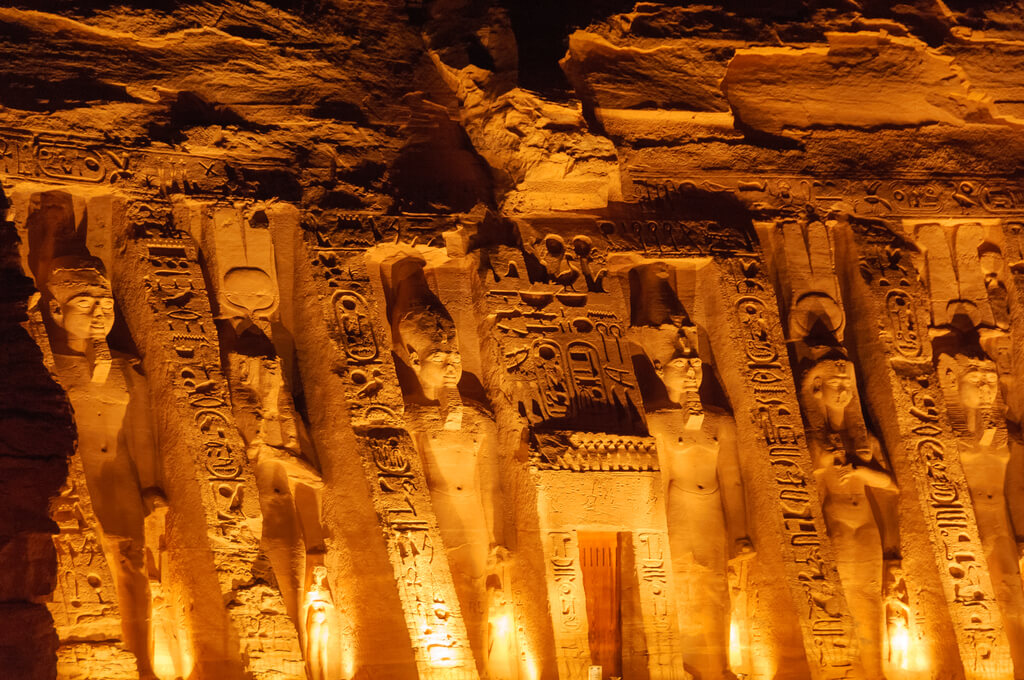A Time Traveler’s Paradise
With seven UNESCO World Heritage sites and jaw-dropping historical destinations, no matter where you go in Egypt, you are bound to find history bursting at the seams! There’s so much more to see than just pyramids, so get ready to travel through time.
Explore Ancient Egyptian Wonders
Ancient Egypt is famous for being the cradle of civilization, and for a good reason. It’s among the oldest and greatest civilizations. Ancient Egyptians cultivated an innovative and integrated culture on the banks of the Nile Valley. They developed grain farming, a sophisticated system of political organization, religion, writing, record-keeping, and a foundation for art to flourish. Ancient Egyptian civilization has shined worldwide through millennia with iconic historical figures, from Akhenaten to Queen Hatshepsut and from Tutankhamun to Ramesses II. The rest, as they say, is history!
Discover Graeco-Roman Treasures
As extraordinary as it was, ancient Egyptian civilization was only the beginning of history-making in the Nile Valley. Egypt also played an important cultural and political role in the Graeco-Roman world. Alexander the Great’s arrival to Egypt in 332 BC marked the beginning of the Graeco-Roman period, during which Egypt was home to such legendary figures as Queen Cleopatra.
Experience Christian Heritage
Christianity was brought to Egypt by the Apostle Saint Mark, early in the first century, making the Egyptian Coptic Church one of the oldest churches in existence.
Today, visitors can still visit many of monasteries, such as the Monasteries of St Anthony and St Paul in the Red Sea and the Red and White Monasteries in Suhag. They can also walk in the footsteps of the Holy Family in Egypt by visiting the sites that were blessed by the Virgin Mary, the infant Jesus, and Joseph during their three-and-a-half-year journey through Egypt seeking sanctuary and protection.
Relive the Grandeur of Islamic Civilization
The arrival of Islam to Egypt heralded Egypt’s role as an important player in the medieval world. Between 641 and 1517, a number of Arab-Islamic dynasties made Egypt a vital political and cultural center. During the Islamic Period, dynasties like the Umayyads, Abbasids, Fatimids, Ayyubids, and Mamluks left behind a wealth of Medieval Islamic architecture, transforming Cairo into the “City of a Thousand Minarets.” The Mamluks were followed by nearly 400 years of Ottoman rule, as Egypt became one of the most important provinces of the Ottoman Empire.
The Muhammad Ali dynasty marked the birth of the modern state of Egypt. Beginning in 1805, Muhammad Ali presided over the building of an impressive modern administrative system that included the world’s earliest modern postal services, railroad infrastructure, irrigation networks, conscription armies, manufacturing, education, and cultural affairs.
Modern Egypt
Khedive Ismail reshaped the urban landscape of key Egyptian cities between 1863 and 1879 by introducing modern sewage systems, schools, state-of-the-art hospitals, and European-inspired architecture.
In 1952, Egypt became a republic, strengthening its position as the unparalleled political and cultural heart of the Arabic world, setting trends in Middle Eastern music, literature, and cinema.
His Excellency Abdel Fattah al-Sisi has been the President of Egypt since 2014. During his time in office, he has overseen a boom in the expansion and modernization of Egypt’s infrastructure across multiple sectors nationwide. The government has spearheaded significant investment to modernize the country’s transportation infrastructure, including roads and bridges, railways, metro and electric railways, sea ports, river transport, land and dry ports, and logistics centers. Cairo International Airport and two other Egyptian airports topped the list issued by the Airports Council International (ACI) of the ten leading African airports in terms of passenger traffic. Eleven Egyptian airports obtained and renewed their certificates for safe health travel from the ACI. In addition to revamping existing airports, Egypt is also building new airports, such as Sphinx International Airport west of Cairo and the New Capital Airport in Egypt’s New Administrative Capital City.
With an eye on the future, Egypt is developing new urban communities and holiday destinations, like Al-Galala, the New Administrative Capital City, New Alamein City, New Aswan, and New Mansura that will attract both domestic and international tourists.
The tourism and antiquities sectors have received unprecedented support from the President, which has allowed the Ministry of Tourism and Antiquities to inaugurate new museums and restore over 100 archaeological sites, including mosques, churches, and synagogues. The Ministry has also been able to continue with its ongoing conservation and preservation of Egypt’s archaeological treasures. New archaeological discoveries continue to make international headlines and garner recognition as some of the most important archaeological discoveries in the world.
